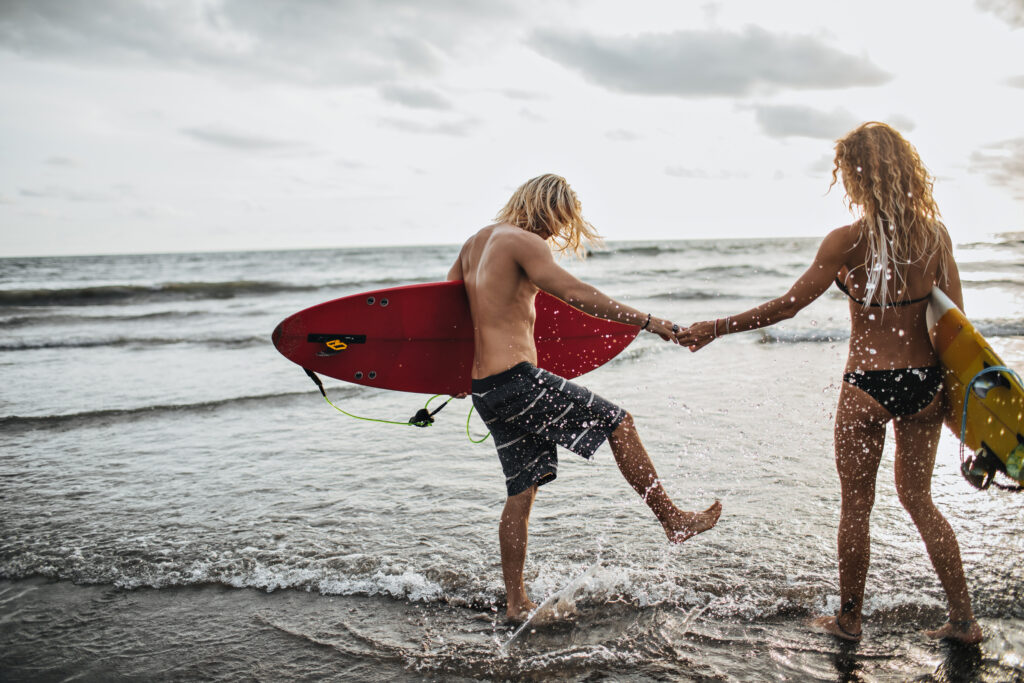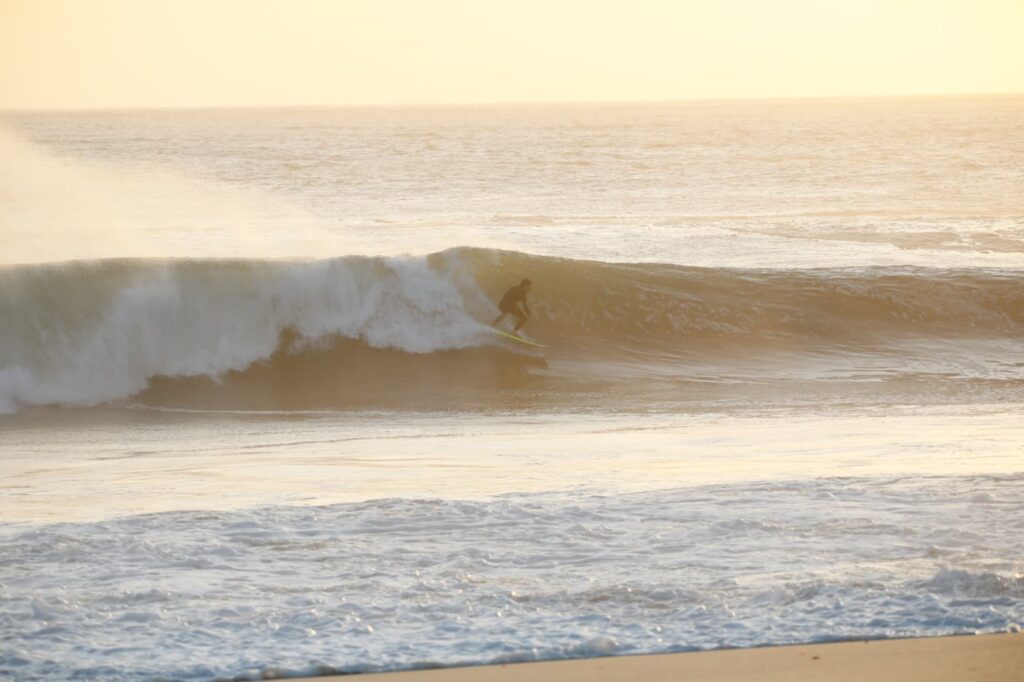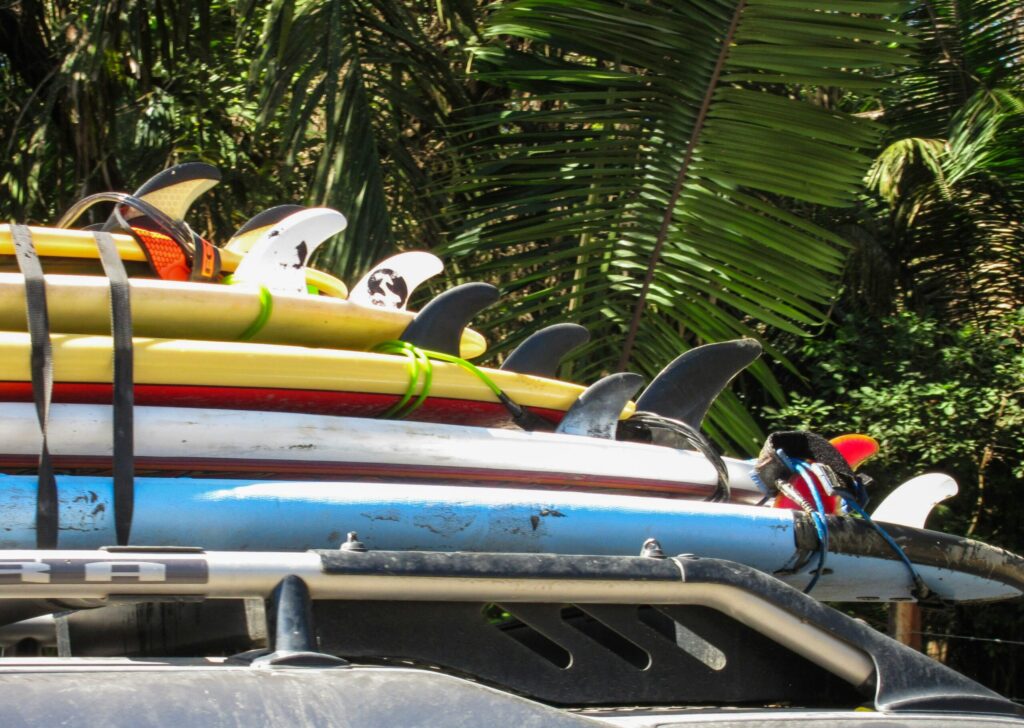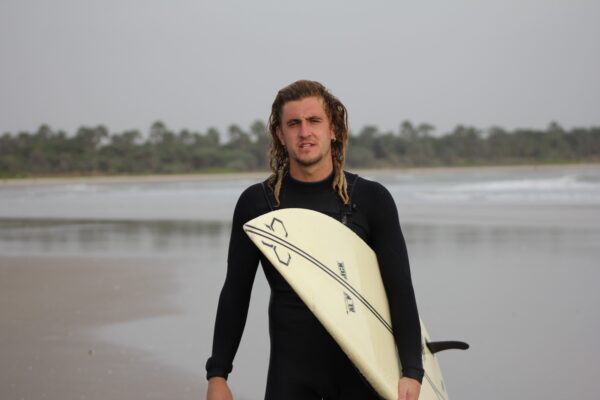What is the age limit for surfing?

Indice
If you’ve ever stood on the shore, with salt spray on your face and the sound of crashing waves in the background, thinking: “I wish I had started this 20 years ago,” let me tell you something important: you are looking at it the wrong way.
There is a widespread myth that makes us believe surfing is the exclusive territory of twenty-somethings with sculpted, magazine-cover bodies. Nothing could be further from the truth. Surfing isn’t just an action sport; it’s a connection with nature, movement therapy, and, above all, an incredibly adaptable activity.
In my experience in the water, I’ve seen 4-year-olds laughing while sliding on the whitewash and 70-year-olds catching waves with an elegance many youngsters would envy. The question shouldn’t be whether you are the right age to surf, but how we should adapt surfing to your age.
In this article, we are going to break down mental barriers. We’re going to explore why surfing is one of the few physical activities that can accompany you throughout your entire life and what considerations you need to keep in mind depending on your life stage.
You may be interested in
There is no age limit for surfing
Let’s be direct: there is no expiration date for getting into the water. Surfing is a sport suitable for all ages, from small children to older adults. What changes isn’t the possibility of doing it, but the intensity, the type of waves we look for, and the equipment we use.
The key to success and longevity in this sport lies in adapting the teaching and equipment to individual capabilities. A child has enviable flexibility and a low center of gravity, but little paddling power. An older adult might have less explosiveness, but an ability to read the ocean and patience that are pure gold.
Therefore, it is strongly recommended to receive professional instruction to start safely. The “DIY” approach to surfing can be frustrating and dangerous, but with the right guidance, the learning curve smooths out and becomes accessible to anyone. Surfing is, in essence, gliding, and gravity works the same for everyone, whether you are 8 or 80.
Getting Started: A Guide by Life Stages
Although the goal is the same (enjoying the wave), the path varies depending on the moment of life you are in. Let’s break down how learning is approached across different age groups.
Kids: Planting the Seed of the Sea
A child’s brain is a sponge, and their motor skills are in full development. Children can start getting familiar with the sea and the board from very early ages, starting around 3 or 4 years old. However, at this age, we aren’t talking about technical “surf lessons,” but rather play.
Ages 3 to 7: The goal is water confidence. It involves playing on the shore, putting them on the board (tandem with the instructor or parents), and having them associate the sea with fun, never fear. Everything must be done in controlled environments and with constant supervision.
Age 8 and up: This is the recommended age for structured classes. Here, children have developed greater motor coordination and have enough strength to handle their own board (usually large volume foam boards) in the water. They understand safety instructions better and can start reading the ocean.
The wonderful thing about children is their lack of fear of embarrassment. They fall, they laugh, and they get back on. That plasticity allows them to learn balance instinctively, much faster than most adults.
Adults and Seniors: It’s Never Too Late for the First Wave
This is where doubts arise, and where I like to insist the most: it is totally possible to start surfing at any time in life, even at 40, 50, or 60 years old.
An adult comes to surfing with different tools. You might not have the rubber-like flexibility of your childhood, but you have discipline, you understand biomechanics if explained well, and above all, you have determination.
There are many older adults who continue to enjoy surfing by adapting their equipment and lifestyle to smaller waves. In fact, it is one of the best ways to stay active. When surfing, you work on balance (proprioception), upper body strength (paddling), and cardiovascular capacity, all with much less joint impact than running on asphalt, provided we choose the right conditions.
It is common to see people who, after retiring, decide it is their time. And they succeed. They start in the whitewash, move to gentle green waves (unbroken waves), and end up turning the morning dip into their sacred ritual. If you are at this stage and have doubts, I encourage you to try surf lessons for beginners in tenerife south, where you will see that groups are usually very heterogeneous, and age stops mattering the moment you put on your wetsuit.
Key Considerations for Surfing at Any Age
For the experience to be positive and, above all, lasting over time, there are certain pillars we cannot ignore. Surfing is fun, but the ocean demands respect.
Safety and Professionalism
I won’t tire of repeating it: it is fundamental to learn with a certified instructor who adapts the teaching to the student’s capabilities. A good teacher doesn’t teach a teenager full of testosterone the same way they teach a 55-year-old looking to improve their health.
The surf school tenerife you choose must prioritize safety and confidence above all else. This implies choosing the right beach for your level, explaining safety protocols (how to fall, how to protect your head, how to avoid currents), and being by your side in the water. Confidence is built wave by wave, and feeling safe is the first step to enjoyment.
Equipment Adaptation (Your Best Ally)
Ego is the surfer’s worst enemy, especially as we get older. Forget the short, thin boards you see in competitions. As you advance in age, larger and more stable boards can be used to facilitate learning and balance.
Volume is life: A board with a lot of volume (liters) floats more. This means you need to paddle less to catch the wave and the board is much more stable when you stand up.
Softboards (Foamies): These are boards made of soft material. They are essential for starting at any age, but for adults and children, they are vital because they eliminate the risk of hard blows with the board itself.
Longboard: For older adults, the Longboard is the king. It allows for elegant, fluid, and relaxed surfing, without the explosive physical demand of the shortboard.
Complementary Sports
Surfing is demanding. If you are looking for a low-impact alternative or a way to train on days when there are no waves (or days when the sea is too big), paddle surfing (Stand Up Paddle) can be an excellent option to get started.
SUP allows you to work on balance and your “core” (abdominal and lumbar area) in a very similar way to surfing, but in a more controlled manner. Additionally, practicing swimming, yoga, or Pilates will give you that extra mobility and lung capacity that you will notice significantly when you enter the water to catch waves.
Frequently Asked Questions: Solving Your Doubts
Over the years, I have heard these questions hundreds of times. Let’s answer them honestly.
At what age is it too late to start surfing?
The short answer is: never. I have had 70-year-old students standing up for the first time. The long answer is: it depends on your physical state and your expectations. If at 60 you expect to do aerials and radical maneuvers, you might be too late. But if your goal is to glide, feel the energy of the sea, and have fun, there is no limit. As long as you have basic mobility and can swim, you can surf.
How long does it take a person to learn to surf?
Surfing has a slow learning curve at the beginning. Generally, in about 3 to 5 classes, an average person manages to stand up in the whitewash and ride a few meters.
However, to start going to the lineup and catching “green” waves (unbroken), more time and consistency are required. This is where total immersion makes the difference. Participating in a <a surfcamp in tenerife south can accelerate this process exponentially. By living with the sea 24/7 and having daily classes, the body assimilates movements much faster than if you go only once a month. In an intensive week, progress is usually equivalent to months of sporadic practice.
Can you surf at 60?
Absolutely yes. In fact, surfing at 60 has advantages. At this age, we tend to be more patient and selective. We don’t paddle crazily for every wave; we choose better. Physically, it is an “elixir of youth.” It keeps joints lubricated, the back strong, and the mind clear. Of course, it is vital to warm up well before entering and stretch well upon exiting to care for the muscles.
Can you surf at 80?
Although it is less common to see beginners at this age, there are octogenarian surfers all over the world (especially in places like Hawaii or California) who still enter the water daily. To start at 80, a healthy physical condition and very gentle, controlled sea conditions would be required, probably with the assistance of an instructor at all times. But as an activity of contact with the sea and gentle gliding (even lying down or on knees), it is possible and beneficial.
Is surfing good for older adults?
It is excellent, provided it is practiced with common sense.
Mental Health: Contact with cold water and nature reduces stress and anxiety (“Blue Mind” effect).
Cardiovascular Health: Paddling is fantastic aerobic exercise.
Coordination: It forces the brain to constantly work to maintain balance, which is crucial for preventing falls in daily life as we age.
Socialization: Surfing creates community. Sharing waves and chats in the lineup prevents social isolation.
Conclusion: Your Age is Just a Number on Your ID
The ocean doesn’t ask for your ID card before sending you a wave. It doesn’t care if you are 15 or 55 years old; it only cares if you are in the right place, at the right time, and with the right attitude.
Stopping doing things that excite us because we think “our time has passed” is a mistake you cannot afford to make. Tenerife and the Canary Islands offer privileged conditions (pleasant water temperature all year round, variety of waves) that greatly facilitate learning at any age, making the experience much friendlier than in cold and hostile waters.
If you have the itch, do it. Look for a professional school, grab a big board, respect your own pace, and, above all, have fun. Because at the end of the day, the best surfer in the water isn’t the one doing the most spectacular maneuver, nor the youngest; the best surfer is, invariably, the one having the most fun.
Dare to try? The sea is waiting for you.




